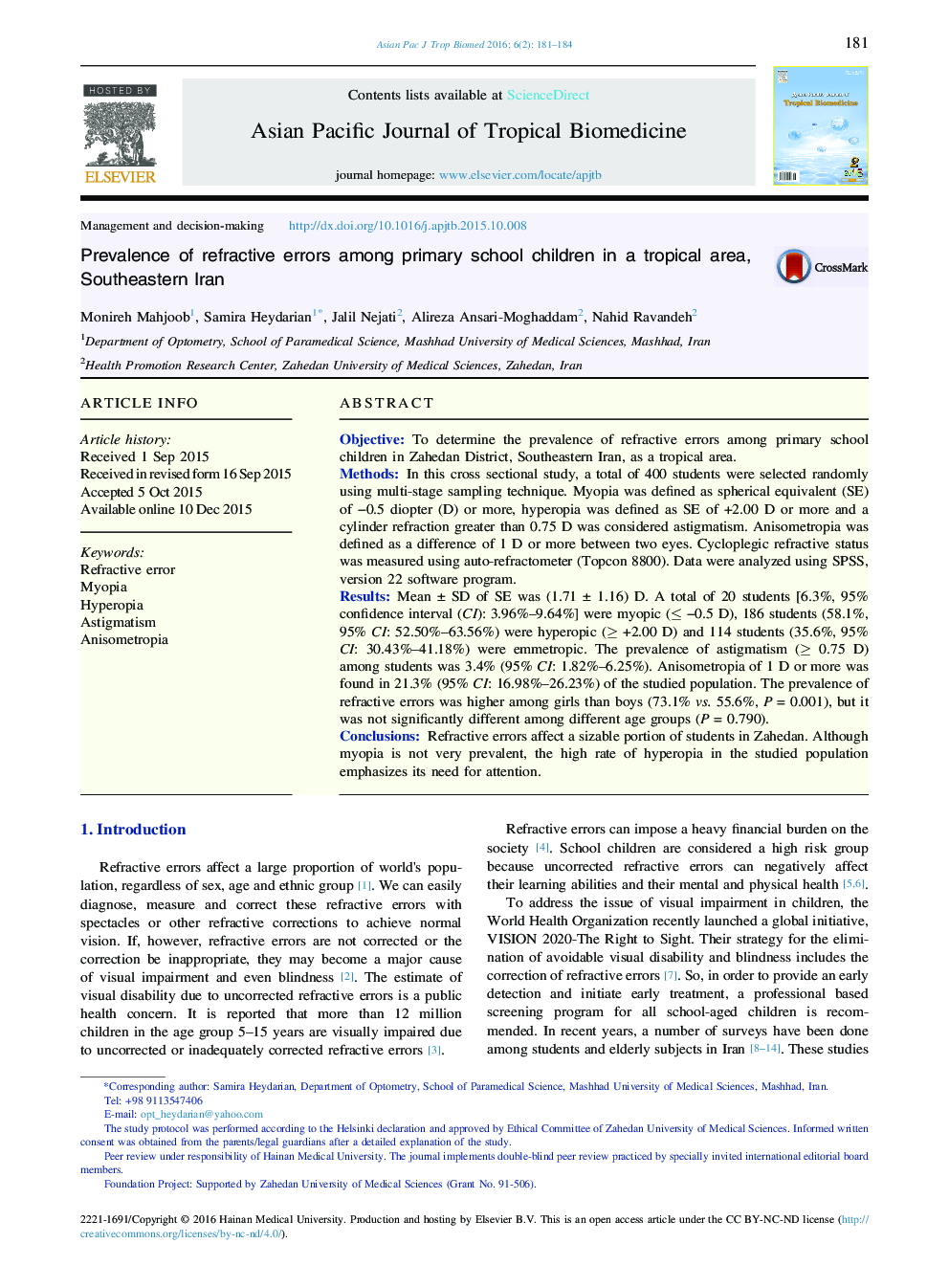| Article ID | Journal | Published Year | Pages | File Type |
|---|---|---|---|---|
| 2032360 | Asian Pacific Journal of Tropical Biomedicine | 2016 | 4 Pages |
ObjectiveTo determine the prevalence of refractive errors among primary school children in Zahedan District, Southeastern Iran, as a tropical area.MethodsIn this cross sectional study, a total of 400 students were selected randomly using multi-stage sampling technique. Myopia was defined as spherical equivalent (SE) of −0.5 diopter (D) or more, hyperopia was defined as SE of +2.00 D or more and a cylinder refraction greater than 0.75 D was considered astigmatism. Anisometropia was defined as a difference of 1 D or more between two eyes. Cycloplegic refractive status was measured using auto-refractometer (Topcon 8800). Data were analyzed using SPSS, version 22 software program.ResultsMean ± SD of SE was (1.71 ± 1.16) D. A total of 20 students [6.3%, 95% confidence interval (CI): 3.96%–9.64%] were myopic (≤ −0.5 D), 186 students (58.1%, 95% CI: 52.50%–63.56%) were hyperopic (≥ +2.00 D) and 114 students (35.6%, 95% CI: 30.43%–41.18%) were emmetropic. The prevalence of astigmatism (≥ 0.75 D) among students was 3.4% (95% CI: 1.82%–6.25%). Anisometropia of 1 D or more was found in 21.3% (95% CI: 16.98%–26.23%) of the studied population. The prevalence of refractive errors was higher among girls than boys (73.1% vs. 55.6%, P = 0.001), but it was not significantly different among different age groups (P = 0.790).ConclusionsRefractive errors affect a sizable portion of students in Zahedan. Although myopia is not very prevalent, the high rate of hyperopia in the studied population emphasizes its need for attention.
